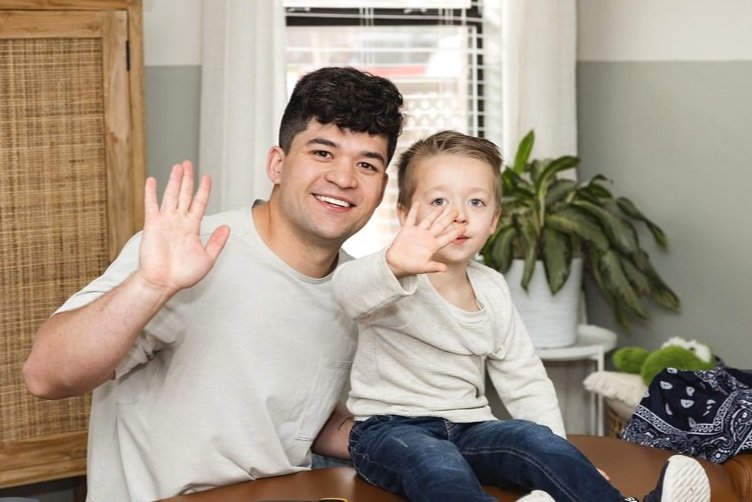The Benefits of Chiropractic for Kids with Sensory Processing Issues
Children with sensory processing issues often experience the world in a way that feels overwhelming or uncoordinated. Some may be hypersensitive, reacting strongly to sounds, textures, or movement, while others may be hyposensitive, seeking extra stimulation to feel balanced. These challenges can affect their ability to focus, regulate emotions, and engage in daily activities comfortably.
READ: Natural Relief for Ear Infections: Argyle Chiropractor Insights and Tips
Since sensory processing is directly connected to the nervous system, many parents are turning to chiropractic care as a natural way to support their child’s ability to process and respond to sensory input. Chiropractic adjustments help optimize nervous system function, promoting better sensory integration, self-regulation, and overall well-being.
In this article, we’ll explore how chiropractic care can benefit kids with sensory processing challenges, helping them feel more balanced, calm, and in control.
What Are Sensory Processing Issues?
Sensory processing issues occur when the brain has difficulty receiving, interpreting, and responding to sensory information. This can affect a child’s ability to engage with their environment comfortably, leading to overwhelming reactions or under-responsiveness to everyday stimuli.
Types of Sensory Processing Challenges
Children with sensory difficulties often fall into one of two categories:
1. Hypersensitivity (Sensory Avoiders)
These children are overwhelmed by sensory input and may react strongly to:
Loud noises (covering ears, becoming distressed in noisy environments)
Bright lights or strong smells
Certain clothing textures (tags, seams, or specific fabrics)
Unexpected touch or movement (dislike of hugs, struggling with balance activities)
2. Hyposensitivity (Sensory Seekers)
These children crave more sensory input and may:
Seek deep pressure or rough play (jumping, crashing into things)
Have a high pain tolerance
Struggle with spatial awareness (difficulty navigating spaces without bumping into things)
Constantly move or fidget (difficulty sitting still, spinning, or rocking)
Common Challenges Faced by Children with Sensory Issues
Difficulty focusing and regulating emotions
Trouble with sleep and relaxation
Challenges in school, social settings, and physical activities
Increased stress or meltdowns when sensory input becomes overwhelming
Since sensory processing is controlled by the nervous system, chiropractic care aims to improve nervous system balance, helping children regulate sensory input more effectively.
The Role of the Nervous System in Sensory Processing
Sensory processing relies on the nervous system’s ability to interpret and respond to information from the environment. When the nervous system is not functioning optimally, a child may struggle with overreacting or underreacting to sensory input, leading to difficulties with focus, movement, and emotional regulation.
How the Brain and Spine Regulate Sensory Input
The brainstem and spinal cord act as the body’s control center, processing signals from the senses.
The autonomic nervous system (ANS) plays a role in regulating responses—the sympathetic system (fight-or-flight) and the parasympathetic system (rest and calm).
If the nervous system is overactive, children may feel constantly overstimulated, leading to meltdowns, anxiety, or difficulty concentrating.
If the nervous system is underactive, they may struggle with low muscle tone, clumsiness, or the need for constant movement to stay engaged.
The Impact of Spinal Misalignments on Sensory Processing
Misalignments in the spine, particularly in the upper neck (cervical spine) and mid-back, can interfere with the flow of nerve signals between the brain and body.
This can lead to dysregulated sensory input, making it harder for a child to process sensations appropriately.
Restoring proper spinal alignment through chiropractic adjustments may help the nervous system function more efficiently, allowing for better sensory integration and self-regulation.
By addressing nervous system imbalances, chiropractic care provides a natural way to support sensory processing, helping children feel more calm, focused, and comfortable in their environment.
How Chiropractic Care Supports Kids with Sensory Issues
Chiropractic care focuses on improving nervous system function, which plays a key role in sensory processing. By ensuring the brain and body communicate efficiently, chiropractic adjustments can help children better regulate sensory input, emotions, and movement.
1. Gentle Spinal Adjustments to Improve Nervous System Communication
The spine houses the central nervous system (CNS), which processes sensory information.
Misalignments (subluxations) in the spine can interfere with how the brain interprets sensory signals, leading to heightened sensitivity or under-responsiveness.
Chiropractic adjustments help restore proper nerve communication, allowing the brain to process sensory input more effectively.
2. Enhancing Sensory Integration and Self-Regulation
Chiropractic care may support a balanced nervous system, making it easier for kids to adapt to different sensory experiences.
Many parents report that their children become calmer, more focused, and less reactive after regular chiropractic care.
Adjustments can also help regulate the autonomic nervous system, reducing overstimulation in sensory-sensitive children.
3. Supporting Motor Skills and Coordination
Children with sensory issues often struggle with gross and fine motor skills due to improper sensory processing.
Chiropractic care may improve body awareness, balance, and coordination by ensuring proper nerve flow to the muscles.
This can help children feel more confident in physical activities and social interactions.
By addressing spinal misalignments and nervous system imbalances, chiropractic care provides a natural, drug-free way to help kids with sensory processing challenges feel more comfortable and in control.
Key Benefits of Chiropractic for Sensory Processing Challenges
Chiropractic care provides a safe, non-invasive approach to supporting sensory regulation in children. By improving nervous system function, adjustments can help children with sensory challenges feel more balanced, focused, and at ease in their daily lives.
1. Improved Focus and Emotional Regulation
Chiropractic adjustments may help reduce nervous system overstimulation, allowing children to stay calm and engaged.
Many parents notice improvements in their child’s attention span, mood stability, and ability to self-regulate emotions.
2. Better Sleep and Reduced Nervous System Overstimulation
Sensory-sensitive children often struggle with falling and staying asleep due to an overactive nervous system.
Chiropractic care helps bring the nervous system into a more relaxed state, promoting deeper, more restful sleep.
3. Enhanced Coordination and Body Awareness
Many children with sensory processing issues experience clumsiness, poor posture, or difficulty with fine and gross motor skills.
Chiropractic adjustments improve body awareness and balance, making movement and coordination easier.
4. Drug-Free, Natural Approach to Sensory Challenges
Unlike medications that may mask symptoms, chiropractic care works with the body’s natural ability to regulate sensory input.
This holistic approach focuses on long-term improvements in nervous system function and overall well-being.
By enhancing sensory processing and nervous system balance, chiropractic care helps children experience greater comfort, confidence, and ease in their daily lives.
What to Expect from Pediatric Chiropractic Care
For parents considering chiropractic care for a child with sensory processing challenges, it’s important to know that pediatric chiropractic is gentle, safe, and tailored to each child’s needs.
1. Gentle, Kid-Friendly Adjustments
Pediatric chiropractors use light, precise techniques to adjust the spine.
There is no cracking or forceful movements—adjustments are often as gentle as applying light pressure to a ripe tomato.
The goal is to help release tension in the nervous system, allowing the brain to process sensory input more effectively.
2. Safe and Non-Invasive Techniques for Sensory-Sensitive Children
Chiropractors trained in pediatric care understand how to work with children who are sensitive to touch and movement.
Adjustments are done in a calm, comfortable environment to help children feel at ease.
Sessions are tailored to each child’s unique sensory needs, ensuring a positive experience.
3. Gradual Progress and Long-Term Benefits
While some parents notice immediate improvements in focus, mood, and sleep, others see gradual changes over time.
Regular chiropractic care helps the nervous system become more balanced, leading to long-term improvements in sensory processing and emotional regulation.
Chiropractic care offers a gentle, effective way to support children with sensory challenges, helping them feel more comfortable and confident in their daily activities.
Finding the Right Chiropractor for Your Child
Choosing a chiropractor with experience in pediatric care and sensory processing challenges is essential for ensuring your child receives the best possible support.
1. Look for a Chiropractor Trained in Pediatric Care
Find a provider who specializes in gentle, neurologically focused chiropractic adjustments for children.
Look for chiropractors certified by organizations such as the International Chiropractic Pediatric Association (ICPA).
2. Ask About Experience with Sensory Processing Issues
A knowledgeable chiropractor will understand how to work with sensory-sensitive children and tailor treatments to their needs.
They should provide a calm, sensory-friendly environment to make visits comfortable.
3. Read Reviews and Testimonials from Other Parents
Look for positive feedback from families who have sought chiropractic care for sensory-related challenges.
Parent testimonials can offer insight into the chiropractor’s approach and success with similar cases.
4. Schedule a Consultation
Many chiropractors offer an initial consultation to discuss your child’s needs and how chiropractic care may help.
This is a great opportunity to ask questions, express concerns, and see if the provider is the right fit for your child.
Finding the right chiropractor can make a significant difference in how well your child responds to care, leading to better sensory regulation, focus, and overall well-being.
A Natural Approach to Sensory Support
Children with sensory processing challenges often struggle to feel balanced and comfortable in their daily environments. Chiropractic care offers a gentle, drug-free way to support the nervous system, helping children regulate sensory input more effectively.
By improving nervous system communication, reducing overstimulation, and enhancing body awareness, chiropractic adjustments can help children with sensory issues experience better focus, emotional regulation, sleep, and coordination.
At Empower Chiro in Argyle, TX, we specialize in pediatric chiropractic care to help children with sensory processing challenges thrive. Our compassionate, neurologically focused approach ensures that each child receives personalized, gentle care in a comfortable setting.
Schedule Your Consultation Today
If you’re looking for a natural way to support your child’s sensory development, we’re here to help. Contact Empower Chiro today to schedule a consultation and discover the benefits of chiropractic care for your child.



